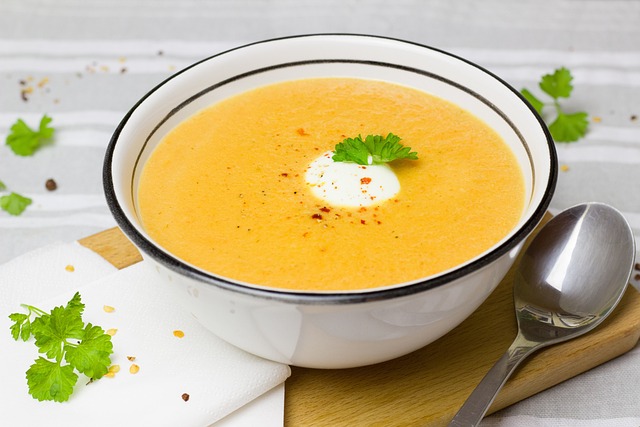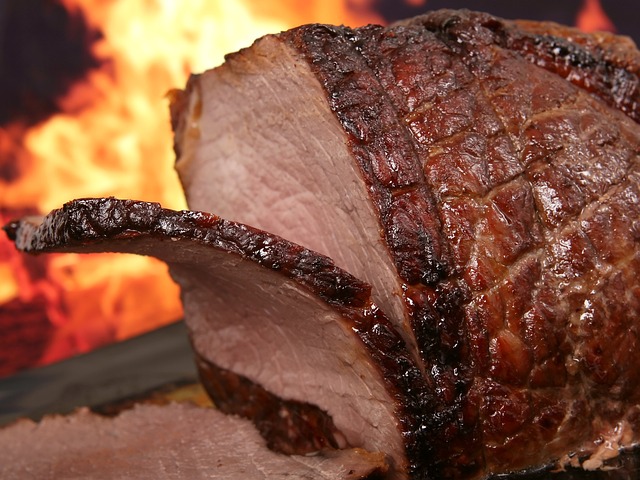Yes, you can eat soup cold. Soup made with fresh, in-season ingredients is much better when served cold. You may make it ahead of time and preserve it in the fridge for quick, no-cook summer lunches; its flavor sometimes increases after sitting there for a day or two.
How long is soup safe to eat?
Within 3 to 4 days. However, soup’s safety may be affected by several variables. The following are some broad recommendations:
- Refrigerated Soup
In most cases, you can safely consume homemade soup that has been refrigerated for up to 4 days. The soup should be cooled soon after cooking and stored in the refrigerator in an airtight container. Soup is best when eaten fresh but may be frozen for later use.
- Commercially Canned Soup
Soups in cans last longer than those served fresh. Consuming canned goods before their “best by” or “use by” date is essential. Do not eat the can that is dented, bulging, or leaking.
- Dairy and Meat-based Soups
In general, soups containing dairy or meat should be taken sooner rather than later. This soup will stay in the fridge for 1 to 2 days, but it’s best eaten within that time. Soups made with milk or cream have a higher risk of spoiling quickly, while soups made with meat have a higher risk of bacterial development.
- Frozen Soup
You can keep soup in the freezer for months. Soup may be safely eaten for 2 to 3 months if kept in sealed containers or freezer bags. Anti-spoilage bacteria growth is aided by freezing.
- Seafood Soups
To avoid food poisoning and guarantee maximum freshness, seafood soups should be consumed within 1–2 days of preparation.
Recommendations
More than 2 hours at room temperature is too long for soup. Bacteria can multiply rapidly in the “danger zone” between 40°F (4.4°C) and 140°F (60°C). If the ambient temperature is higher, the window for safe consumption becomes even shorter.
Watch out for degradation signs, including a funky scent, unusual hue, mold growth, or an unpleasant taste. If any of these conditions are present, the soup should be discarded.
Benefits of Consuming Cold Soup

Cold soups are a culinary treat that provides a novel and refreshing way to experience classic flavors. Although cold soups may be foreign to some, they have become increasingly common in many international cuisines. These soups are great for the warmer months or as appetizers because they are served cold.
One way to beat the heat is having a bowl of chilled soup on a warm day. A bowl of chilled soup is a rapid remedy for overheating. In addition, consuming a bowl of cold soup might be an effective way to calm down inside.
Another benefit of cold soup is that it might aid with weight loss. Soup is a great weight loss food since it is high in water content and fills you up quickly. Having a bowl of cold soup first thing in the morning has been shown to increase metabolic rate and promote weight loss.
Also, soup is a refreshing approach to ease your stomach. A bowl of chilled soup can do wonders for the digestive system when you’re feeling bloated or constipated.
10 Healthy cold soup
A nutritious cold soup is a pleasant and flavorful way to enjoy various foods and ingredients. Some common choices are as follows:
- Gazpacho
Gazpacho is a traditional cold soup in Spain that is cooked with various vegetables, including tomatoes, cucumbers, bell peppers, onions, garlic, and olive oil. Vinegar and spices are often added to the blended concoction before serving. This soup is low-calorie and rich in healthy nutrients, including vitamins and antioxidants.
- Chilled Avocado Soup
Avocados add a velvety texture and rich flavor to cold soups. They frequently mix avocados with lime juice, cilantro, and yogurt for a filling and healthy meal.
- Cold Borscht
This Eastern European soup’s earthy flavor and brilliant color come from the beets used in its preparation. Cucumbers, dill, and sour cream are commonly used to enhance the flavor and texture of cold borscht.
- Chilled Melon Soup
Melon soups, such as cantaloupe or honeydew, provide a sweet and hydrating option. They’re often complemented with mint and a touch of citrus.
- Cucumber Soup (Tarator)
Cucumbers, yogurt, dill, garlic, and walnuts are all ingredients in this traditional Bulgarian soup. It has a refreshing flavor and a nice mix of crunchy and smooth textures.
- Mango Soup
Mango soup is a sweet, tropical choice that combines ripe mangoes with coconut milk, lime juice, and a pinch of spice.
- Watermelon Gazpacho
Watermelon gazpacho is an interesting take on the classic Gazpacho that incorporates the sweetness of watermelon with the tang of cucumbers, tomatoes, and herbs.
- Chilled Pea Soup
This healthy and refreshing soup blends fresh or frozen peas with herbs like mint and tarragon.
- Chilled Spinach Soup
Cold soups made with spinach are a healthy and nutritious option. Mixing with yogurt, garlic, and lemon may create a tangy and pleasant flavor.
- Chilled Carrot and Ginger Soup
This soup’s spicy and energizing flavor combines carrots and ginger. This mixture is not only tasty but also healthy.
Culinary Tips for Making Cold Soup

When preparing a cold soup, there are a few details to remember. The most crucial step is ensuring all the ingredients are well-mixed and the soup has the right amount of seasoning. Getting the flavors exactly right is vital, as cold soup can be more delicate than hot soup.
The soup’s consistency is another consideration. Blending the components is a common technique used to get a silky consistency. If you want a chunkier soup, though, just leave some of the components whole.
FAQs
Can you eat soup without heating it?
If the can isn’t dented or leaking, you should be fine eating soup out of the can. Many soups are cooked to very high temperatures during the canning process, killing out any potentially dangerous germs.
Can soup be served hot or cold?
The ideal serving temperatures for soups are:
- Cold Soups- Should be served at 40°F
- Hot clear soup- should be served near boiling 210°F
- Hot Cream soup- serve between 190°F to 200°F
Why is hot soup better than cold?
The surface tension of a liquid reduces as its temperature rises, allowing it to take on a wider area. As a result, the low surface tension of hot soup allows it to distribute evenly across the tongue, giving it a more pleasant flavor than cold soup.
Final Verdict
Cold soups retain their original hues, flavors, and nutritional value if the soup is made with fresh ingredients. They taste best when topped with complementary ingredients like fresh herbs, croutons, and olive oil.
Overall, cold soups are a pleasant choice that demonstrates that soup doesn’t necessarily need to be heated to be good, and they may serve as a new culinary experience, a refreshing way to avoid the heat, or a standout appetizer.








